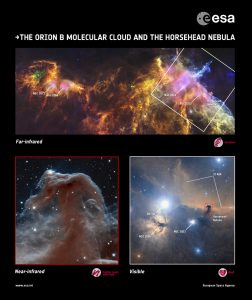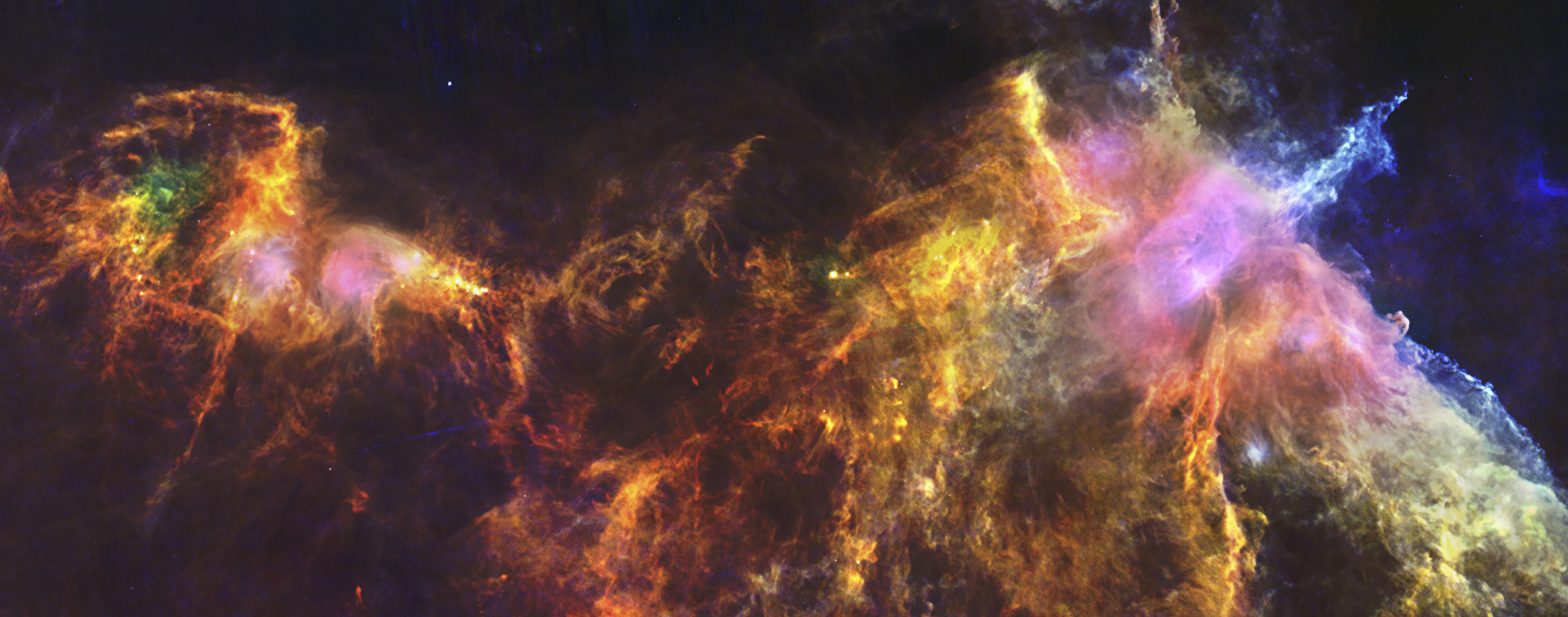| Basic Information | |
| What is this? | The Horsehead Nebula |
| Where is it in the sky? | In the constellation of Orion, just off the end of his belt |
| How big is it? | The Horsehead Nebula itself is a few light years tall |
| How far away is it? | Around 1300 light years |
| What do the colours represent? | Red and orange regions are cooler, while green and blue regions are warmer |
Downloads
See this object in:

The Horsehead Nebula is one of the most iconic images in the night sky. A favourite amongst astronomers, both amateur and professional, it is a cloud of dust in the which appears to take the shape of a horse’s head. In visible light, this cloud appears dark, silhouetted against the bright glow from background gas, but in the far-infared light seen by Herschel the horse’s head glows with its own light, seen towards the right of the image above.
The full image shows the surrounding region, complete with a complex network of clouds and filaments. The glowing cloud behind the horse’s head (called IC 434) is illumiated by the star Alnitak, the left-most member of Orion’s famous belt. Also nearby is the Flame Nebula (also called NGC 2024), a cloud in which stars are forming, and which glows brightly in the images from Herschel. Thes clouds glow in visible light because they reflect the light from nearby stars.
The Horsehead Nebula and the Flame Nebula are all part of one massive region called the “Orion B Molecular Cloud”. To the left of the full image are stellar cocoons in which massive stars are forming, such as M78 (also known as NGC 2068). Threading away from both regions are dense filaments of gas and dust. The orange and yellow clumps represent the earliest stages of star formation, with green and blue regions representing warmer dust heated by stars that have already formed.
The Hubble Space Telescope has also produced a new image of the Horsehead Nebula, to celebrate its 23rd anniversary in space. This image, in near-infrared light, shows the newly-formed stars hiding within the dust cloud. Their intense light is eroding away the edge of the horse’s head, with some already peaking out from within their dusty cocoons.
The Horsehead Nebula, and the rest of the surrounding Orion B Molecular Cloud, lies around 1300 light years away. Being relatively close by astronomical standards, this allows astronomers to investigate the detailed structure of the gas and dust, with a view to further understanding what drives the formation of the filaments and the subsequent birth of stars.
A video showing the three images of the Horsehead Nebula is available on the ESA website.
Detailed Information
- Herschel and Hubble see the Horsehead in a new light (ESA Portal)
- A fresh take on the Horsehead Nebula (ESA Hubble website)

